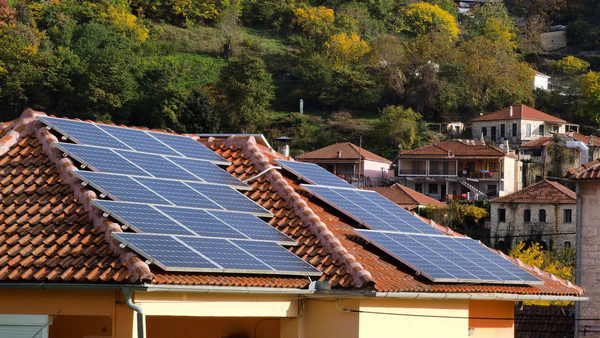New proposal from European Commission that targeting in Energy Performance of Buildings Directive
The EC has proposed that as of 2030 all new buildings should emit no on-site carbon emissions from fossil fuels.
The European Union’s executive branch that would see all new buildings in the bloc be powered by renewables “as far as possible” and emit no on-site carbon emissions from fossil fuels from 2030.
The European Commission (EC) has proposed that the new rules around the energy performance of buildings will align with the European Green Deal as part of a revised Energy Performance of Buildings Directive (EPBD).
The updated EPBD would require that in all new buildings, where technically feasible, 100% of on-site energy consumption is covered by renewable energy as of 2030, with an earlier adoption as of 2027 for public buildings. The long-term goal is to decarbonise the EU’s building stock by 2050.
“Overall, today’s proposal for EPBDII is set to mainstream the installation of on-site solar and storage in building renovations, making it that much easier for Europe to benefit from the most low-cost and flexible clean energy source,” said Miguel Herrero, senior policy advisor at SPE(SolarPower Europe).

How will the proposal support the phase out of fossil fuels used for heating in buildings?
The updated directive places a much stronger emphasis on the decarbonisation of existing and worst-performing buildings, according to SPE.
The revisions form part of the EC’s ‘Fit for 55’ package, which aims to align the EU’s climate and energy legislation with its ambition of slashing emissions 55% by 2030, compared to 1990 levels, as it looks to reach net zero by 2050.
As part of that package, the EC earlier this year updated its Renewable Energy Directive to increase the overall binding target from 32% to a new level of 40% renewables in the bloc’s energy mix by 2030.
Presenting the EPBD proposal, EC executive vice-president Frans Timmermans said it prioritises the most cost-effective renovations while helping to fight energy poverty. “By targeting the obstacles to renovation and providing financial support for the necessary upfront investment, today’s proposal on the energy performance of buildings aims to boost the rate of energy renovation across the EU,” he said.
The proposal introduces a building ‘renovation passport’ that would provide homeowners with a tool to facilitate planning towards zero emissions.
Will this proposal lead to higher costs for home owners or industry?
From the EC press corner page, we could learn their opinion:
Energy renovation pays for itself over time, generating energy bills savings, which are generally a multiple of the investment needed to upgrade a building performance. Despite this, currently energy renovation often does not take place because of a variety of upfront obstacles. This can leave home owners and tenants exposed to higher energy costs and more vulnerable to energy price increases. This is especially true for those living in the worst performing buildings who are also often those with less capital to finance energy efficiency improvements.
By targeting the obstacles to renovation, this proposal aims to lower costs for these home owners and tenants. It does so by focussing on buildings where renovation is the most cost-effective and brings the greatest savings on energy consumption, CO2 price, taxes and tariffs. A home in energy class G consumes on average about 10 times more energy than a nearly-zero energy building or a zero-emissions building. Upgrading these buildings through renovation to energy class F will trigger between 4.6-6.2 Mtoe a year in energy savings across the EU. An upgrade to energy class E will trigger about 2/3 more energy savings.
Under the Commission's proposal, the renovation from level G to F on the Energy Performance Certificate scale would apply to about 30 million building units. The Commission is helping to mobilise the finance for the upfront investment costs for these units, with up to €150 billion from the EU budget available to implement the minimum energy performance standards, between now and 2030.
Finance comes from several sources, including the European Regional and Development Fund, the Cohesion Fund and the Recovery and Resilience Facility, thanks in particular to the strong ‘Renovate' flagships in national recovery and resilience plans. The proposed new Social Climate Fund will also mobilise €72.2 billion from the EU budget for the period 2025-2032 to support households, notably those living in worst performing buildings. To enable an efficient combination of public and private financing, the Commission is also working to make the State aid framework more conducive to the needs of the EU-wide minimum energy performance standards.
National Building Renovation Plans must also ensure the deployment of sufficient funds and support, to provide national-level finance and help leverage private investment.